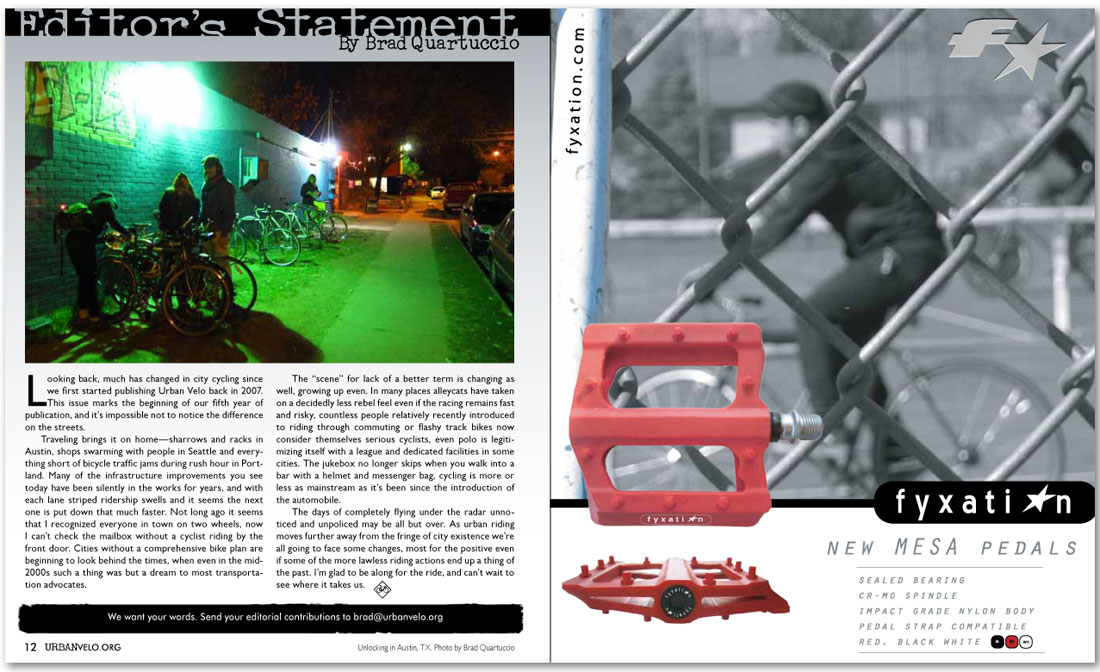


Editor's Statement
Looking back, much has changed in city cycling since we first started publishing Urban Velo back in 2007. This issue marks the beginning of our fifth year of publication, and it’s impossible not to notice the difference on the streets.
Traveling brings it on home—sharrows and racks in Austin, shops swarming with people in Seattle and everything short of bicycle traffic jams during rush hour in Portland. Many of the infrastructure improvements you see today have been silently in the works for years, and with each lane striped ridership swells and it seems the next one is put down that much faster. Not long ago it seems that I recognized everyone in town on two wheels, now I can’t check the mailbox without a cyclist riding by the front door. Cities without a comprehensive bike plan are beginning to look behind the times, when even in the mid-2000s such a thing was but a dream to most transportation advocates.
The “scene” for lack of a better term is changing as well, growing up even. In many places alleycats have taken on a decidedly less rebel feel even if the racing remains fast and risky, countless people relatively recently introduced to riding through commuting or flashy track bikes now consider themselves serious cyclists, even polo is legitimizing itself with a league and dedicated facilities in some cities. The jukebox no longer skips when you walk into a bar with a helmet and messenger bag, cycling is more or less as mainstream as it’s been since the introduction of the automobile.
The days of completely flying under the radar unnoticed and unpoliced may be all but over. As urban riding moves further away from the fringe of city existence we’re all going to face some changes, most for the positive even if some of the more lawless riding actions end up a thing of the past. I’m glad to be along for the ride, and can’t wait to see where it takes us.
Unlocking in Austin, TX. Photo by Brad Quartuccio